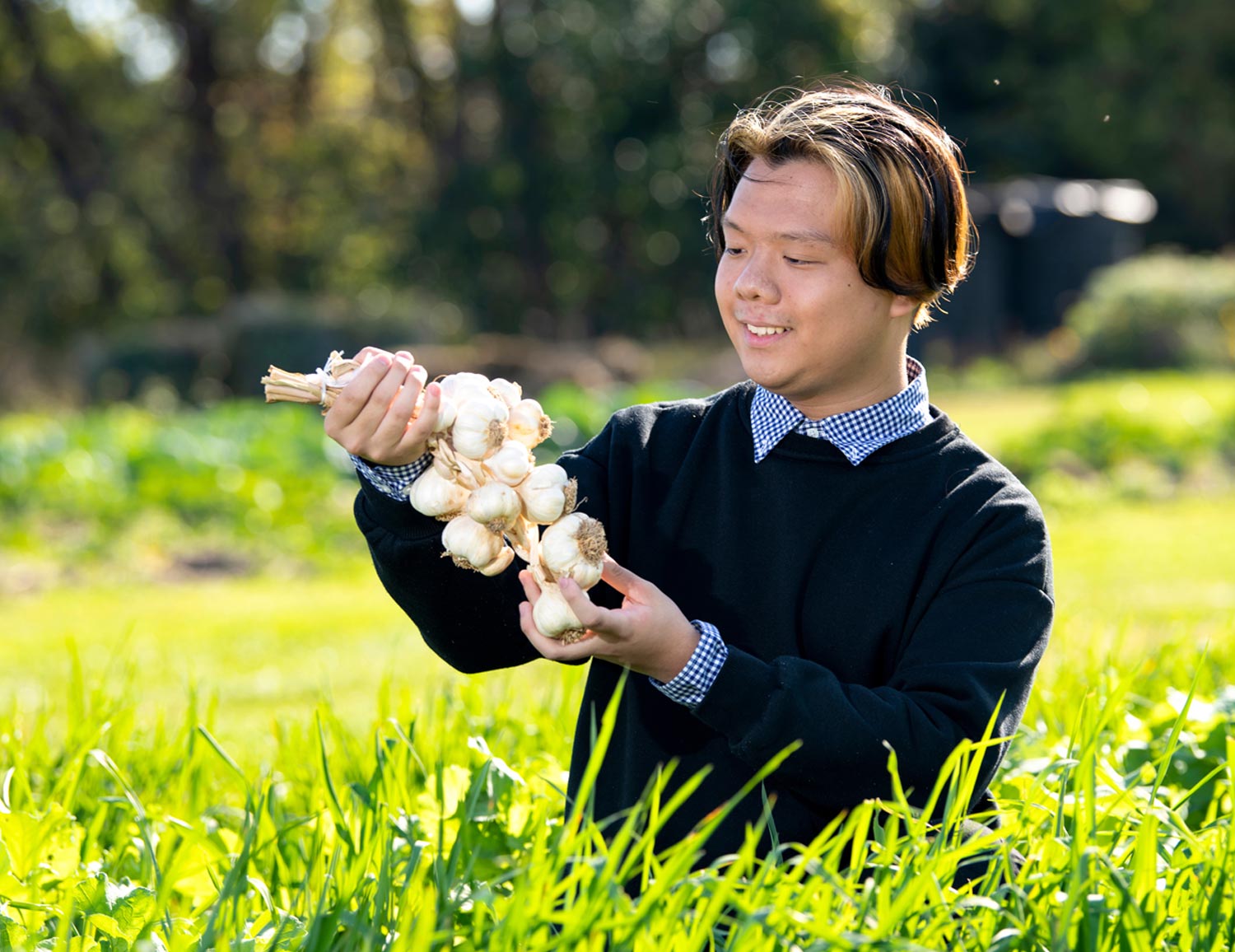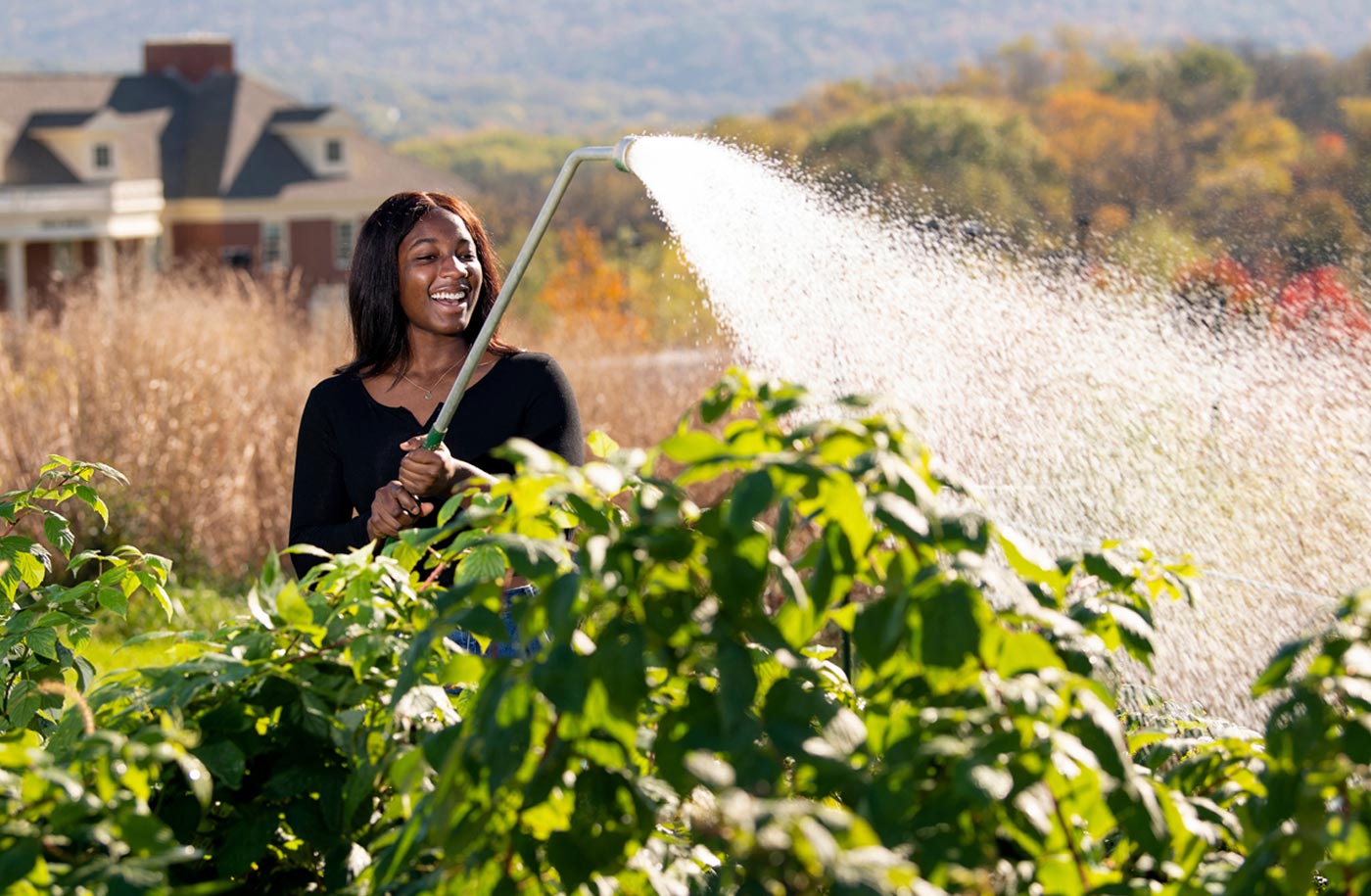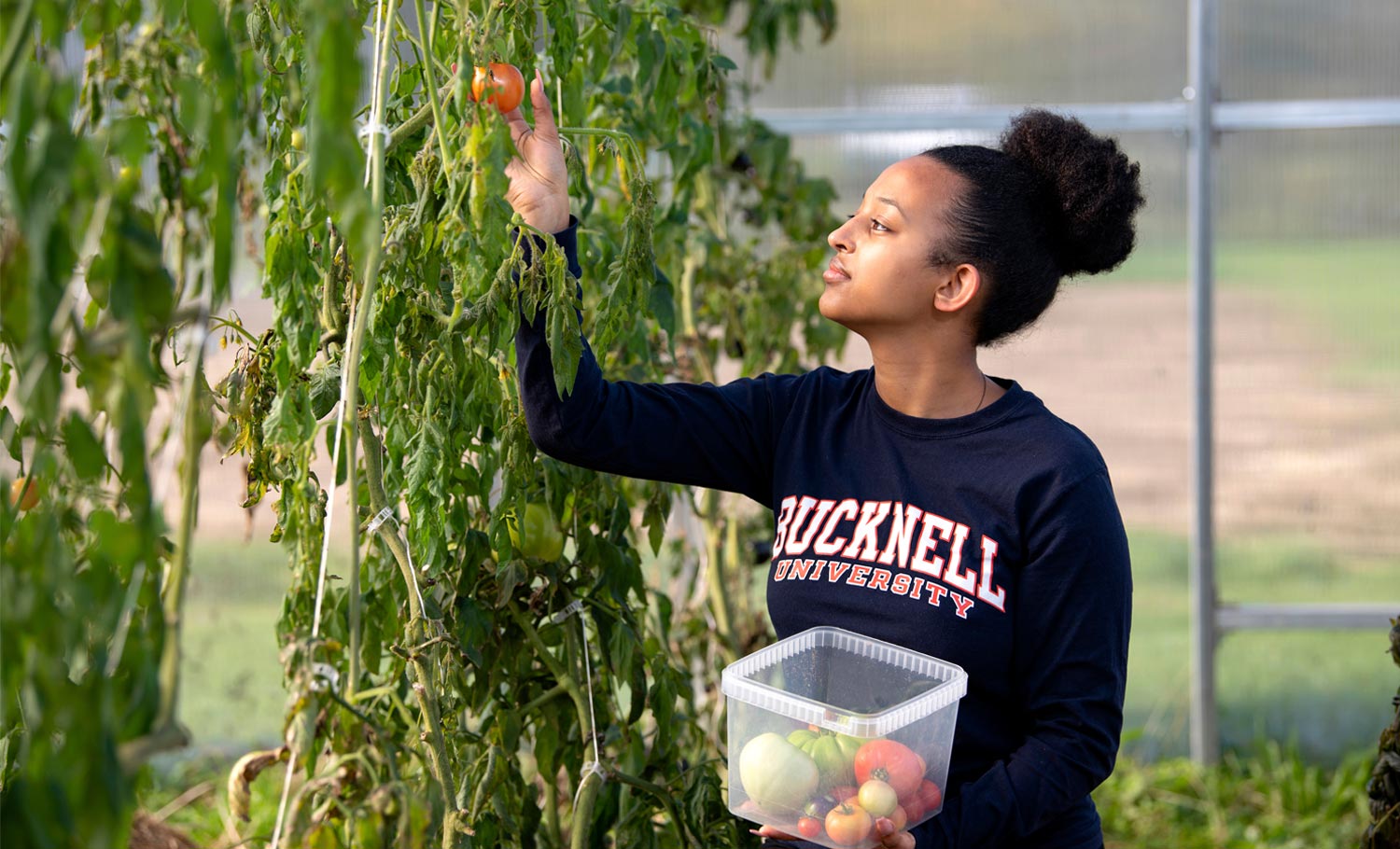Connecting with the Land
n Sam Pring ’23’s first visit to the Bucknell Farm, biology professor and farm adviser Mark Spiro plucked a ripe cob of corn off the stalk and grilled it up for Pring on the spot. It was one of Pring’s earliest experiences at Bucknell during first-year Orientation, and it “made a really good first impression to have a professor make us fresh food,” Pring says.
Pring’s interest in the farm grew through the Environmental Residential College, which engages first-year students in the planet’s most pressing sustainability and climate issues through immersive experiences in nature. Now, the biology and linguistics double major is just one of many students pursuing hands-on education in one of Bucknell’s most dynamic living laboratories.



“It’s an awesome opportunity to spend time outside, move around and even do scientific work that benefits the community around us,” says Pring, who has used the site as a setting for biological research. Pring’s first project, overseen by Spiro as part of the Residential College program, focused on increasing the biodiversity of organisms on the farm. This year, Pring is partnering with peers to analyze the effects of regenerative agriculture practices on soil health.
“Regenerative agriculture is a way of using plants and animals to improve the fertility of the land,” Pring explains. “Instead of using chemicals and machinery, we plant specific crops to loosen and maintain organic matter in the soil.
“I love that a lot of my research takes place out in the field,” says Pring, who also volunteers weekly at the farm. “I’m not the kind of person who can sit at a workbench from 9 to 5. Compared to some other labs where you stare into a microscope for hours, my classmates and I really love being able to have such a unique experience.”
Cultivating Connection
“It’s all about the people, 100%,” says Getaneh, a neuroscience major. “The farm is that one place on campus where you can just live in the present with a wonderful group of peers and friends.”
Getaneh began working on the farm as a first-year student and is now a student farmer leader, spending Saturday mornings teaching and directing volunteers as they plant, maintain and harvest produce that fills Bucknell’s on-campus food pantry. Seeing the difference accessible, organic produce makes in the daily lives of students “makes me feel really connected to the community,” Getaneh says.


“Negative histories of exploitation and removal can create invisible barriers between Black and brown people and the natural spaces they occupy,” says Asante, who plans to major in environmental studies. “It’s important to find ways to help historically disenfranchised groups develop their own relationships with the environment.”
Recognizing Roots
Many of the Bucknell Farm’s regenerative farming techniques — including the use of cover crops, such as radishes, and planting corn, beans and squash together — were implemented by Indigenous people long before the arrival of Europeans. To acknowledge this lineage, Greenawald is designing informational signs to be posted in relevant areas throughout the farm.
“Because we don’t learn about them in context, these ‘textbook’ sustainable farming practices have a history that we often don’t think about,” says Greenawald, a studio art major. “As a predominantly white institution, it’s important that we acknowledge the histories of people of color and create ways for students to reclaim their place.”
For Greenawald, “the most fulfilling part is helping others create a deeper sense of security with nature, food and the community that is created at the farm. I’ve always wanted to help others in some form, and working at the farm has solidified that passion for me. It’s like, ‘Oh, here’s what I’m going to do every day: connect with the land, harvest food and give to others who need it.’ ”